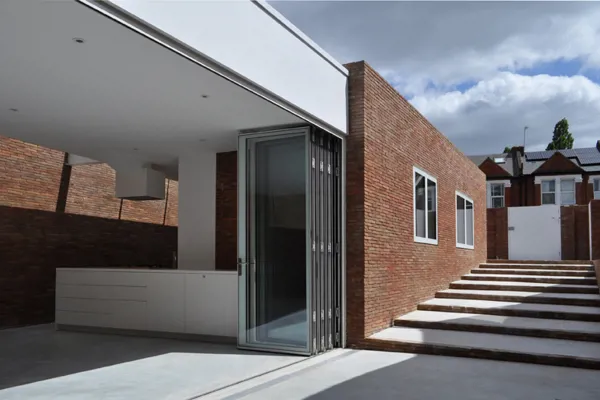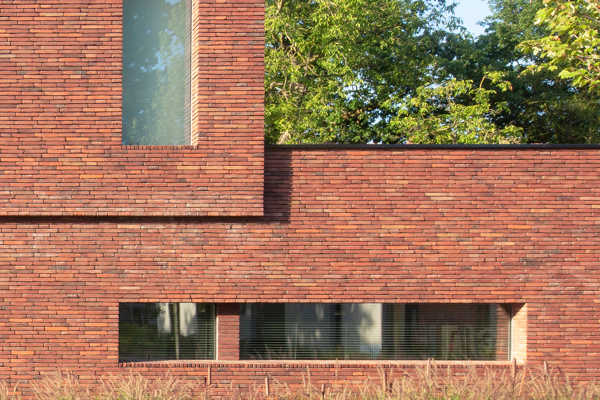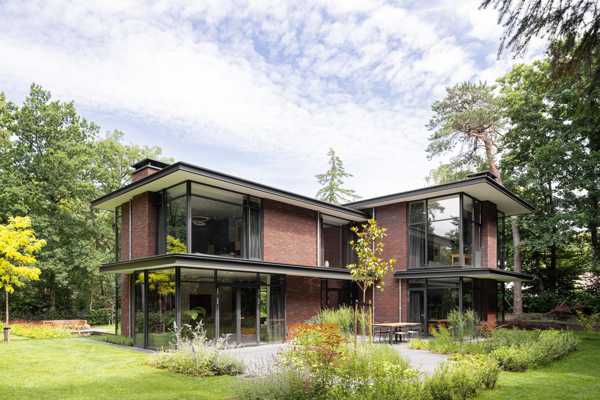Facing brickslinea 3016
Technische informatie
- Kleur omschrijving
- The colour of the body is coral to brown-red with nuances.
- Afmeting (L x B x H)
- ca. 240x115x38 mm (LxBxH)
- Aantal / m² met een traditionele voeg
- 80 (12 mm)
- Aantal / m² met een dunne voeg
- 93 (6 mm)
linea 3016
Coral red slim brick
This thin facing brick with subtle shading is produced using the Wasserstrich method. It also carries our Hand-Made label which guarantees a strong, natural nuance. This coral red unsanded variant from our linea series is ideal for accentuating clean linear designs in decorative brickwork.
reportage linea 3016

Jack Woolley's "Spiral House" with linea 3016
Winner of the RIBA Viewpoint competition (RIBA Journal; Sept. 2015)
The site in Balham, abandoned for the past 15 years and overrun by Japanese knotweed, was originally the garden of a neighbouring building. It made the ground works complicated but the site unappealing to developers and hence affordable.

Functional detailing in brickwork with ‘linea 3016’
Distinctive yet modest architecture
At first glance, there is nothing that immediately strikes you about this home with its coral-red brickwork. A lot of houses are brick-built and a lot also have the same orange-red colouring.
However it is the floating carport, asymmetrical design and specific detailing in the brickwork that make this modest house so distinctive.

A house in harmony with nature: the essential role of the facing brick in a modern, modest appearance
Horizontal lines surrounded by green
In mid-2017, Engel architects were commissioned to create a design for a house on a plot in the Trompenberg residential area in Hilversum, in a wooded area on the edge of the village.
Lees verder
Referenties
Verwerkingstips
Preparation of the construction site
- Always order the full amount of bricks required for a specific site. In this way, the entire order can be made during one production run.
- Try to have the full order supplied at one time. If this creates several deliveries, always mix a number of packs from the previous delivery with a number of packs from the new delivery. This procedure is especially recommended in case of re-order or for an additional order.
- Take bricks diagonally across the pack.
- Draw and use bricks from at least five different packs.
- For setting out, use bricks from the delivery made to the site in question. Do not exclusively use the theoretical dimensions of the brick, or samples previously supplied, or different production run from that intended for the site.
- As soon as the bricks arrive on site, check delivery tickets and certificates against the specification and order. Also check that there are no visible inconsistencies with the order.
- Do not lay bricks in freezing weather or protect the ‘fresh’ masonry with insulating mats in order to avoid frost damage to the mortar.
- In the case of prolonged dry hot weather, lightly dampen the newly laid brickwork to stop the mortar drying and curing too quickly.
- Do not lay bricks in precipitation in order to prevent mortar from running on the wall.
Avoid Efflorescence
- During and after laying, protect the newly built brickwork for a height of at least 60 cm - but ensure there is airspace between the brick face and the waterproof covering.
- Provisionally install rainwater down pipes to avoid saturation of the newly laid brickwork
- Never lay bricks in driving rain conditions






















